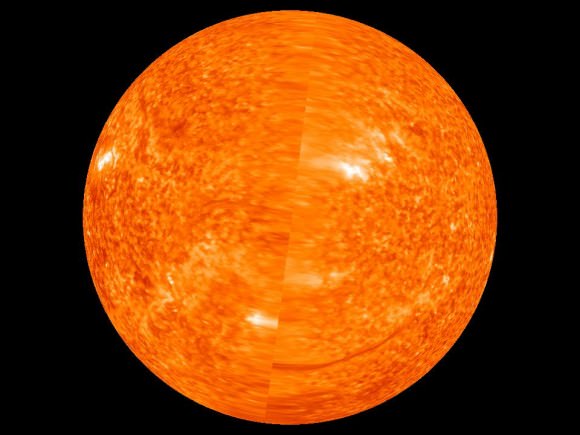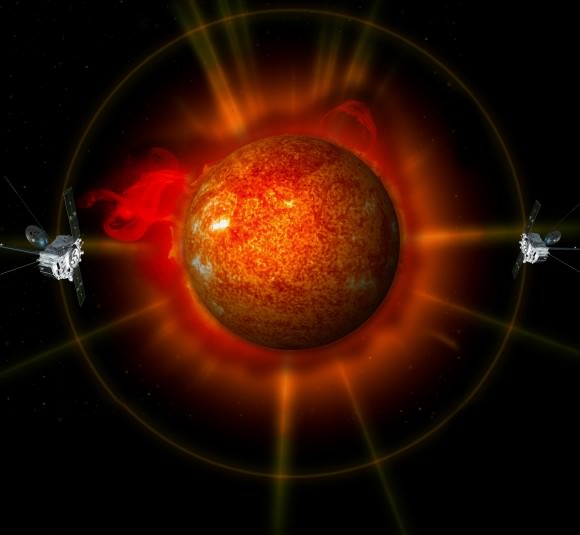No one knows exactly why a NASA solar probe stopped talking to Earth six weeks ago, but it’s possible the spacecraft is out of power and is drifting without a way of calling for help, the agency said in an update.
On Oct. 1, NASA suddenly lost contact with one of the two Solar TErrestrial RElations Observatory (STEREO) spacecraft, which are currently examining the far side of the Sun. The probes are considered crucial for solar forecasting, so the loss is a blow. While the STEREO-Behind probe has been mute since then, the agency says “not all hope is lost” for a recovery.
STEREO-Behind went silent after NASA deliberately reset the spacecraft. Along with its twin, STEREO-Ahead, in the coming years the spacecraft will need to reposition its antenna to avoid getting fried by the Sun. Also, there is a period where each spacecraft will need to work autonomously, because the Sun’s radio interference will make it difficult or impossible for communications to get through.

To prepare the spacecraft, NASA has been testing them out ahead of these events, which are called “solar conjunction operations.” STEREO-Ahead passed the tests and entered these operations in August, where it will remain until 2016. STEREO-Behind was supposed to go into this phase on Dec. 1. Preparations started Sept. 27, when STEREO-Behind was put into the same safe mode test that was used on STEREO-Ahead.
“One part of this test was to observe the firing of the spacecraft hard command loss timer, which resets the spacecraft if no commands are received after three days,” NASA wrote in an update. “The purpose of this is to correct any problems that might be preventing the spacecraft from receiving commands from the ground. While the spacecraft is out of contact on the far side of the Sun, this reset will occur every three days.”
The timer did fire as planned on Oct. 1, and the spacecraft reset as expected. However, the radio signal coming from STEREO-Behind wasn’t as strong as expected. Then, it disappeared altogether.

While there’s not much information to work with, NASA says it does know a few things. Before the reset, information or telemetry from the spacecraft showed it was working fine. After the reset, though, they could tell the inertial measurement unit (IMU) was turned on. This is unusual, and shows that the guidance system’s star tracker hadn’t picked up its guide stars as expected.
“This is not unexpected—there have been other occasions when it took the star tracker several minutes, or even a few days, to start determining the spacecraft orientation based on star images,” NASA said.
“In fact, on Sept. 28, as part of the same test sequence, the spacecraft was reset, and it took 12 minutes for the star tracker to start providing an attitude solution. When the star tracker is ofline, the spacecraft will automatically turn on the IMU to provide rotational rate information.”

NASA thinks the star tracker’s struggles would explain why the radio signal wasn’t as strong as expected, because the spacecraft’s high-gain antenna wasn’t aimed at Earth properly. But there’s more — it appears one of the IMU’s laser gyroscopes isn’t working and is giving “bad data to the attitude control system”, NASA said. So now the spacecraft was facing two failures, which is tough for it to deal with, the agency added.
Did the spacecraft recognize the problem? If it did, it would have used the last backup system — five solar aspect sensors — which should have made sure the solar panels were pointed in the right direction to provide power. If not, the spacecraft might have thought it was in a roll, turned on its thrusters, and then spun itself in such a way that it could have lost sunlight power.
NASA is trying to send out commands to address all of these failure possibilities, and it emphasizes that a recovery is still possible. The Solar and Heliospheric Observatory (SOHO), for example, also lost power in 1998 when a spin put its solar panels out of reach of the Sun. However, as its orbit changed, the Sun’s light eventually fell across the panels and power was restored. The spacecraft was recovered and still works today.
Source: NASA

